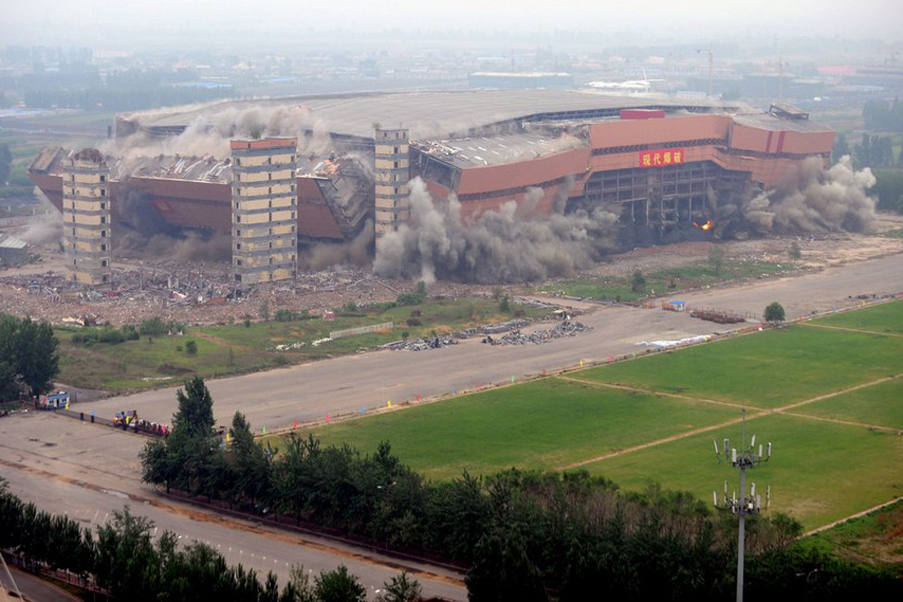Demolition: An Architectural Life-Cycle
Shenyang Sports Centre, called “the green island” (绿岛), was brutally destroyed by explosives last June 3. The large building, 455,000 m², with a hosting capacity of 30,000 people, was built in 2003 for 800 million yuan. The destruction supposedly cost around 3 million yuan and the rubble-clearing has taken months. Still, the private developers have found it more profitable to destroy the Centre in order to reuse or sell the land rather than restoring and/or maintaining the existing structure. Within a total of nine years, the Sports Centre was built, exploited, abandoned, and then destroyed —a rather limited life-cycle for a building and an investment of this size.
Other reports state that several Chinese projects had the same story with surprisingly short life spans, despite initially huge investments such as Hubei Shouyi Gymnasium (湖北首义体育培训中心综合训练馆), 10 years of operation (1999-2009); Yongchuan Conference and Exhibition Center in Chongqing (重庆永川市会展中心), 5 years (2000-2005); Waitan Garden Residence in Wuhan (武汉外滩园小区), 4 years of existence (1998-2002) or Building No.1 in the Residence Weiyena Senlin Garden in Hefei (合肥维也纳森林花园小区), destroyed before completion (2005).
-
2012/06/07

-
Shenyang

-
Modu Team


the other map
explore arrow
arrow
loading map - please wait...




